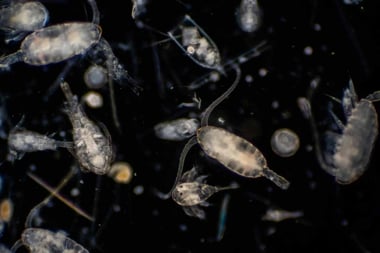
If you're trying to green your home, a few little things such as stopping air leaks and decreasing water consumption, can make a big difference.
Water swirls down the drain from the tap left on while you brush your teeth. In summer, your air conditioning bills climb faster than the temperature rises. In winter, a draft of cold air leaks under your front door. You want to make changes, but where do you start?
Even a few simple changes will reduce your energy consumption and save money on your energy bills. Both the federal government and several provinces, including Ontario and British Columbia, offer incentives to defray the costs. In addition, Ottawa’s EcoENERGY Retrofit program gives qualified homeowners rebates of up to $5,000 on green renovations.
To discover the energy wasters in your home, you can have a professional energy audit conducted for around $500. However, you don’t have to pay a professional. Make your own air leak detector using lit incense sticks. Walk around your house, paying close attention to windows, doors, and outside walls. If there’s an air leak, the tip of the incense glows and the smoke moves in the direction of the leak.
Many air leaks can be sealed cheaply and easily by creating a barrier between the indoors and the outdoors. Caulking and insulation are the main tools required. Depending on your experience and comfort level, you can do many of these fixes yourself or hire a handyman.
Heating and Cooling
Winter
A programmable thermostat is a simple, inexpensive way to decrease energy use. In winter, set it to lower the temperature at night and when you’re away from home. A properly serviced furnace with clean filters increases heating efficiency.
Feeling cold? Wear sweaters or use extra blankets. Warm socks and area rugs on cold floors keep toes toasty.
Open curtains on south-facing windows during the day to take advantage of sunlight and close them at night to help keep out the cold. Plant evergreen trees on the north side of the house to act as a windbreak.
Summer
In summer, set the air conditioner at 24 or 25 C and turn it off when leaving the house. A fan is more energy efficient than air conditioning.
Heat-proof the house by drawing blinds and drapes during the day, installing awnings, and planting shade trees on the house’s sunny side. Turn off unnecessary lights and electronic equipment to prevent heat buildup.
Reducing Water Wastage
To ensure clean water for tomorrow, we must conserve it today. Sixty-five percent of indoor home water use is in bathrooms, with toilets using the lion’s share. More efficient fixtures can dramatically reduce water use.
Some local water departments run free water-saver home assessment programs and have websites with water efficiency tips for both inside and outside the house. Some also offer cashback programs for new high-energy or dual-flush toilets. Check with your municipal government for more information.
At first glance, caulking windows or turning off taps while brushing your teeth doesn’t seem like a big deal. But multiply that kilowatt of electricity or litre of water by millions of households and the savings soar. When it comes to being green, you can make a difference–right where you live.
Ways to Stop Air Leaks
Pipes and ducts
Seal spaces around pipes where they enter the house. Use silicon mastic sealant or metal tape on ducts rather than duct tape, as these products won’t dry out from the heat.
Insulate accessible ducts and hot water pipes so you don’t lose excess heat.
Baseboards
Apply weatherstripping along the base of doors and along the sides where it meets the frame. Rubber weatherstripping is most effective and waterproof.
Fireplaces
Install a damper in the chimney of an open-hearth fireplace, and keep it closed when the fireplace is not in use. Glass doors help, but an energy-efficient fireplace insert is more effective at decreasing air leaks while increasing heat efficiency.
Entry Holes for Telephone, TV, Electric, Gas, and Water Supply Lines.
Seal small holes with exterior-rated caulk and larger ones with either polyurethane or latex foam.
Hatches
Insulate hatch doors in attics or crawl spaces with rigid insulation, and place weather stripping around their edges.
Windows
Do a yearly visual inspection of windows to check for cracked or missing caulking. For cracks and small gaps, add regular caulking. For larger gaps, use expandable caulking.
In winter, install storm windows or use winterizing kits to apply plastic to the interior of the window. Hang long, thick curtains in front of windows to stop drafts.
Mail Slots
Oil spring-loaded covers and replace them if they don’t snap shut. Attach thick fabric or plastic over the mail slot on the inside of the door. Alternatively, seal the slot and install an outside mailbox.
Doors
Apply weatherstripping along the base of doors and along the sides where it meets the frame. Rubber weatherstripping is most effective and waterproof.
Buy draft stoppers, or create your own by filling a tube of material, such as a sock, with rice or other grains. Roll up a small area rug or blanket, and place it against thebottom of the door.




